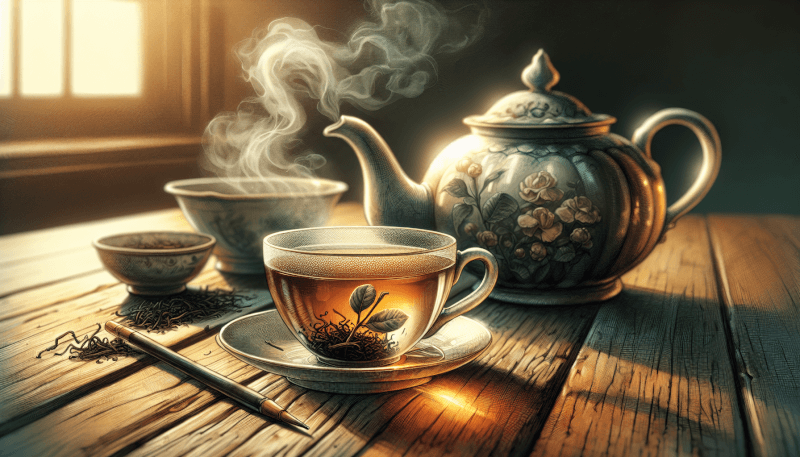Tea lovers rejoice! In this article, you will embark on a journey to unravel the secrets of tea brewing. Discover the five key elements that are essential to brew the perfect cup of tea. From water temperature to steeping time, we will guide you through each element with simple yet effective tips. Whether you’re a novice tea enthusiast or a seasoned connoisseur, mastering these elements will elevate your tea drinking experience to a whole new level. So, grab your favorite mug and get ready to delve into the world of tea brewing mastery!
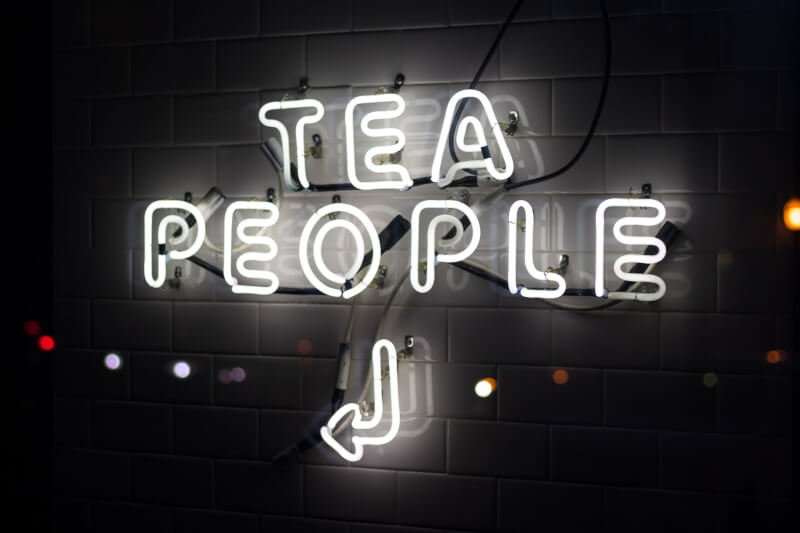
Choosing the Right Tea
Understanding Different Types of Tea
When it comes to choosing the right tea, it’s essential to first understand the different types available. The four main types of tea are black, green, oolong, and white. Each type undergoes a unique process of harvesting, withering, and oxidation, resulting in distinct flavors, aromas, and levels of caffeine.
Black tea is fully oxidized, giving it a robust and bold taste. Green tea, on the other hand, is minimally processed and retains its natural freshness and grassy flavors. Oolong tea falls somewhere in between, with a partially oxidized leaf, which produces a range of flavors from floral to fruity. Lastly, white tea is the least processed of all, with delicate and subtle flavors. Understanding these differences can help you choose a tea that aligns with your preferences.
Selecting High-Quality Tea Leaves
Once you’ve familiarized yourself with the different types of tea, it’s crucial to select high-quality tea leaves for the best brewing experience. Look for tea sourced from reputable tea gardens or estates that prioritize quality cultivation and harvesting practices. The freshness and flavor of tea depend greatly on the conditions in which it was grown and the care given to the leaves during processing.
Consider purchasing loose leaf tea instead of tea bags, as it allows for a better infusion and more control over the brewing process. Loose leaf teas tend to be of higher quality and provide a more satisfying flavor profile. Take the time to explore different tea brands and find one that resonates with your taste preferences and values.
Considering Flavor Profiles and Personal Preferences
When choosing the right tea, it’s essential to consider your flavor preferences and personal tastes. Some teas have strong, robust flavors, while others are delicate and nuanced. Experiment with different tea varieties and take note of the flavors, aromas, and mouthfeel that appeal to you the most.
Consider whether you enjoy a bold and brisk cup of black tea or a light and refreshing infusion of green tea. Perhaps you prefer the complex flavors of oolong or the delicate sweetness of white tea. Everyone’s palate is unique, so don’t hesitate to try different teas and explore the vast world of flavors that tea has to offer.
Water Temperature
The Importance of Water Temperature
Water temperature plays a significant role in tea brewing, as it directly affects the extraction of flavors from the tea leaves. Different types of tea require different water temperatures to achieve optimal taste and balance. Using the wrong water temperature can result in a bitter or weak brew, diminishing the flavors and aromas that the tea has to offer.
Determining the Right Temperature for Different Teas
To determine the right water temperature for different teas, it’s important to know the general guidelines. In general, black teas are best brewed with water just below boiling point, around 200 to 212°F (93 to 100°C). Green teas, on the other hand, require lower temperatures, typically between 150 to 180°F (65 to 82°C), to preserve their delicate flavors and avoid bitterness.
Oolong teas benefit from a slightly higher temperature range of 180 to 205°F (82 to 96°C), allowing for the release of complex flavors. White teas are the most delicate and are typically brewed with water around 160 to 180°F (71 to 82°C). These temperature ranges serve as a starting point, but feel free to adjust them based on personal preferences and the specific tea you’re brewing.
Using a Thermometer or Kettle with Temperature Control
To ensure consistency and accuracy in your tea brewing, consider using a thermometer or an electric kettle with temperature control. A thermometer can help you monitor the water temperature and make adjustments as needed. Electric kettles with temperature control allow you to set the desired temperature and ensure that your water reaches the optimal range for tea brewing.
Investing in these tools can enhance your tea brewing experience by taking the guesswork out of water temperature and ensuring that you consistently achieve the best flavor from your chosen tea.
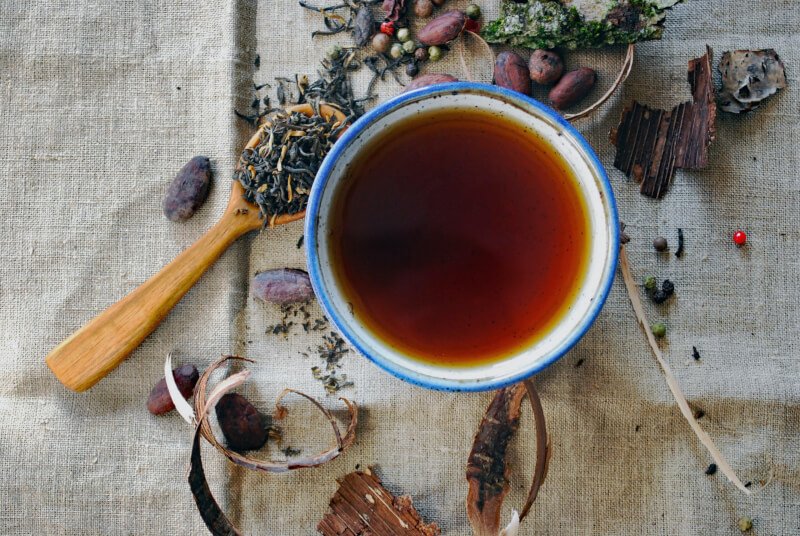
Tea-to-Water Ratio
Understanding the Proper Ratio
The tea-to-water ratio is an essential element in creating a balanced and flavorful cup of tea. Finding the right balance between tea leaves and water can greatly impact the strength, aroma, and overall taste of your brew.
The general guideline for the tea-to-water ratio is one teaspoon of loose leaf tea per 8 ounces (240 milliliters) of water. However, this ratio can be adjusted based on personal preferences and the tea variety being brewed. Some teas may require more or less tea leaves to achieve the desired strength and flavor.
Measuring Tea and Water Correctly
To ensure accurate measurements, it’s important to measure both the tea leaves and water correctly. Use a measuring spoon or scale to measure the appropriate amount of loose leaf tea, following the recommended ratio. For example, if you’re brewing a 16-ounce cup of tea, you would need two teaspoons of tea leaves.
As for the water, use a measuring cup or kettle with clearly marked measurements to ensure accuracy. By measuring both the tea and water correctly, you can maintain consistency in your brewing process and achieve the desired flavor profile with each cup.
Adapting the Ratio to Personal Taste
While the recommended tea-to-water ratio serves as a starting point, don’t hesitate to adapt it to your personal taste preferences. If you prefer a stronger cup of tea, increase the amount of tea leaves. Conversely, if you prefer a milder brew, decrease the amount of tea leaves.
Experiment with different ratios to find the balance that suits your taste buds. Keep in mind that the tea-to-water ratio can vary depending on the type of tea and your personal preferences, so don’t be afraid to personalize it to create your perfect cup of tea.
Steeping Time
The Role of Steeping Time in Tea Brewing
Steeping time refers to the duration that tea leaves are immersed in hot water to extract their flavors. The steeping time directly affects the strength, aroma, and complexity of the brewed tea. Every type of tea has an ideal steeping time that allows for the proper infusion of flavors without over-extraction.
Experimenting with Different Steeping Times
To master the art of tea brewing, it’s important to experiment with different steeping times. Start with the recommended steeping time provided for the specific tea you’re brewing. Typically, black teas are steeped for 4 to 5 minutes, while green teas require a shorter steeping time of 2 to 3 minutes.
However, these are just guidelines, and steeping time can be adjusted based on personal preferences. You may prefer a stronger cup of tea and choose to steep it longer, or opt for a shorter steeping time if you prefer a milder taste. It’s all about finding the balance that satisfies your palate.
Using a Timer or Stopwatch
To ensure consistency in your tea brewing, use a timer or stopwatch to keep track of the steeping time. This helps avoid over or under-extraction of flavors, resulting in a well-balanced cup of tea.
Most smartphones have built-in timer apps that can be set specifically for steeping tea. If you prefer a more tactile experience, you can also use a simple kitchen timer or stopwatch. Whichever method you choose, having a reliable timing device will assist you in achieving the perfect brew every time.
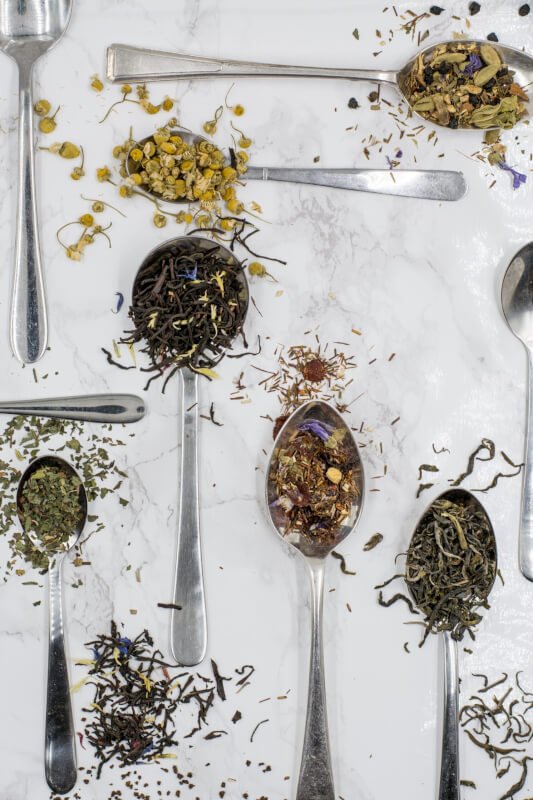
Teaware and Infusion Methods
Choosing the Right Teapot or Brewing Vessel
Teaware plays a crucial role in tea brewing and can significantly impact the taste and overall experience. When choosing a teapot or brewing vessel, consider the material, size, and design.
There are various options available, including ceramic, glass, yixing clay, and stainless steel. Ceramic and glass teapots are versatile and work well with most tea varieties. Yixing clay teapots are highly regarded for their ability to enhance the flavors of tea over time but should be dedicated to a specific type of tea due to their porous nature. Stainless steel teapots are durable and excellent at retaining heat.
The size of your teapot should be based on the number of cups you wish to brew. Avoid using a teapot that is too large for your intended serving size, as it may result in over-brewed or diluted tea.
Understanding Different Infusion Methods (e.g., Gong Fu, Western)
Tea infusion methods refer to the specific techniques used to brew tea. Different methods, such as Gong Fu and Western-style brewing, offer unique experiences and flavors.
Gong Fu brewing is a traditional Chinese method that involves using a smaller teapot and multiple short infusions. This method allows for a more intense and concentrated taste, highlighting the tea’s complexity. Western-style brewing, on the other hand, involves using a larger teapot and longer infusion times. This method creates a milder and more balanced cup of tea.
Experimenting with different infusion methods can enhance your tea brewing journey and introduce you to new flavors and brewing techniques.
Adapting the Brewing Process to Different Teaware
Once you’ve chosen your teaware and infusion method, it’s important to adapt your brewing process accordingly. Each teapot or brewing vessel may have different heat retention properties, which can affect steeping time and temperature.
For example, glass teapots tend to cool down quickly, so you may need to adjust the water temperature slightly higher or reduce the steeping time to compensate. Conversely, yixing clay teapots retain heat well, so be mindful of adjusting the steeping time to avoid over-brewing.
By adapting the brewing process to your chosen teaware, you can ensure that you’re maximizing the potential of your tea leaves and achieving the best flavor and aroma in each cup.
Water Quality
The Impact of Water Quality on Tea Flavor
Water quality is often overlooked but plays a crucial role in the final taste of your brewed tea. The minerals and impurities present in water can alter the flavor profile and overall experience.
Hard water with high mineral content, such as calcium or magnesium, can result in a heavy and dull taste. On the other hand, soft water with low mineral content can lead to a flat and weak brew. The ideal water for tea brewing should strike a balance, allowing the tea flavors to shine without being overpowered by impurities.
Considering Filtered or Bottled Water
To ensure optimal water quality, consider using filtered or bottled water for your tea brewing. Filtered water helps remove impurities and minerals that can negatively impact the taste. Bottled water, especially those with a neutral pH level, offers a consistent base for brewing tea.
If using tap water, it’s essential to consider the quality and taste of your local water. If tap water has strong odors or tastes, it’s best to avoid using it for tea brewing, as it can impact the final flavor of your tea.
Avoiding Tap Water with Strong Odors or Tastes
As mentioned above, tap water with strong odors or tastes should be avoided when brewing tea. These odors and tastes can seep into the tea and alter the flavor, resulting in an unpleasant brew.
If you notice chlorine, sulfur, or any other strong scent in your tap water, it’s best to opt for filtered or bottled water instead. By using clean and odorless water, you can ensure that the true flavors of your tea shine through without any unwanted influences.
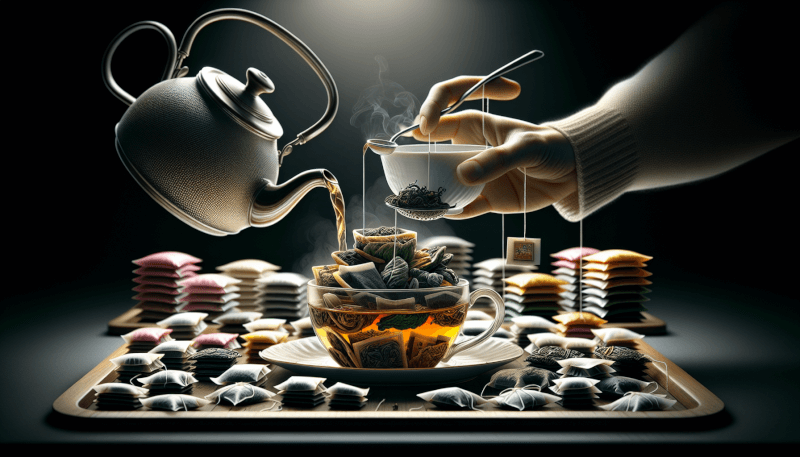
Tea Storage
Properly Storing Tea Leaves to Maintain Freshness
Proper tea storage is essential in maintaining the freshness and flavors of your tea leaves. Exposure to light, air, moisture, and strong odors can degrade the quality of the tea and compromise its taste and aroma.
To preserve the freshness, store your tea leaves in an airtight container, away from direct sunlight and strong odors. Ceramic or glass containers with airtight seals are ideal for long-term storage. Avoid using plastic containers, as they can retain odors and allow air to seep in.
The Role of Light, Moisture, and Air
Light, moisture, and air are the three main enemies of tea storage. Exposure to light can cause the tea leaves to degrade and lose their flavors. Moisture can result in mold and spoilage, while air allows for oxidation, which negatively impacts the taste and aroma.
It’s crucial to store tea in a cool and dry place, away from light and humidity. Always reseal the packaging or container tightly after each use to minimize air exposure. By protecting your tea leaves from these elements, you can ensure that they stay fresh for longer and provide a satisfying brew every time.
Choosing the Right Containers for Tea Storage
When choosing containers for tea storage, consider materials that provide an airtight and light-blocking environment. Ceramic or glass containers with airtight lids or seals are highly recommended. These materials help protect the tea leaves from air, moisture, light, and strong odors that can compromise the quality.
Avoid storing tea in transparent or plastic containers, as they do not offer the same level of protection. Additionally, be mindful not to overcrowd your storage containers, as this can result in damage to the tea leaves.
Proper tea storage ensures that your tea remains fresh and full of flavor, allowing you to enjoy the best possible brew with every cup.
Understanding Tea Leaves
Recognizing Different Leaf Grades
Tea leaves come in various grades that reflect their quality and appearance. Recognizing these grades can provide valuable insights into the flavor and aroma of the tea.
Whole leaf teas, such as “OP” (Orange Pekoe) or “FTGFOP” (Finest Tippy Golden Flowery Orange Pekoe), consist of full, unbroken leaves and typically offer a greater complexity of flavors. Broken leaf teas, denoted by “BOP” (Broken Orange Pekoe), have smaller pieces and tend to infuse more quickly, producing a robust and bold flavor.
Tea grades can vary depending on the region and type of tea, so it’s beneficial to familiarize yourself with the grading system specific to the tea you enjoy to better understand and appreciate the quality of the leaves.
Identifying Whole Leaf versus Broken Leaf
The distinction between whole leaf and broken leaf teas lies in the size and condition of the tea leaves. Whole leaf teas consist of unbroken, intact leaves, while broken leaf teas have smaller pieces resulting from processing.
Whole leaf teas generally offer a more delicate and nuanced flavor profile, as the leaves have retained more of their essential oils. Broken leaf teas, on the other hand, tend to infuse quickly and produce a bolder and more robust cup.
Identifying the leaf condition can give you insight into the brewing properties and flavor characteristics of your chosen tea. By understanding the difference, you can adapt the brewing parameters to ensure a satisfying and well-balanced cup of tea.
Understanding the Impact of Leaf Size on Flavor
Leaf size plays a vital role in the brewing process and can significantly impact the flavor of your tea. Larger tea leaves generally require longer steeping times to fully infuse and release their flavors. This is because the larger surface area takes longer for the water to penetrate and extract the tea’s essence.
Conversely, smaller leaf particles found in broken leaf teas infuse more quickly due to their increased surface area. This results in a bold and robust flavor that can be achieved in a shorter steeping time.
Understanding the impact of leaf size can help guide your brewing parameters and ensure that you extract the desired flavor from your tea leaves.
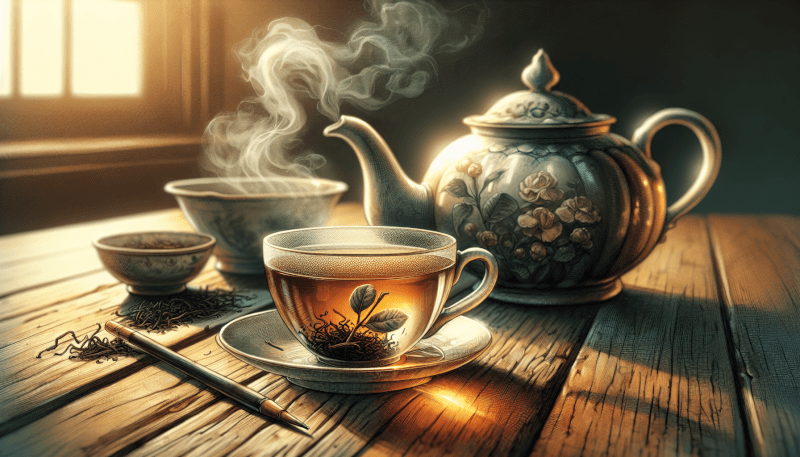
Experimenting with Tea Brewing
Trying Different Tea Varieties
Tea brewing offers endless possibilities to explore and experiment with different tea varieties. Treat brewing tea as an adventure of the senses and discover the multitude of flavors and aromas available.
Begin by trying teas from different regions, such as Darjeeling, Assam, or Ceylon for black teas, or Dragon Well, Sencha, or Matcha for green teas. Each region offers unique characteristics that are influenced by factors like climate, soil, and processing techniques.
Additionally, explore teas infused with herbs, flowers, or fruits, which can add a delightful twist to your tea experience. By trying different tea varieties, you expand your palate and develop a deeper appreciation for the nuances within the world of tea.
Adjusting Brewing Parameters
As you embark on your tea brewing journey, don’t be afraid to adjust the brewing parameters to suit your personal taste preferences. Adapt steeping times, water temperatures, and tea-to-water ratios to achieve your preferred strength and flavor.
Explore the effects of longer or shorter steeping times on the taste and aroma of your tea. Adjust the water temperature to highlight different aspects of the tea’s flavor profile. By experimenting with these parameters, you can tailor each cup to your own unique preferences and create a brew that elevates your tea experience.
Noting Brewing Observations and Preferences
To truly master tea brewing, it’s essential to keep track of your brewing observations and preferences. Keep a brewing journal or notes to record the different teas you’ve tried, the brewing parameters you used, and your thoughts on the resulting brew.
Take note of the flavors, aromas, strengths, and weaknesses of each cup. This record will not only help you track your personal preferences but also serve as a guide for future brewing sessions. Over time, you’ll develop a keen understanding of your own tastes and be able to consistently achieve the perfect cup of tea based on your preferences.
Serving and Enjoying Tea
Choosing the Right Teacups and Serving Vessels
Tea isn’t just about the brewing process; it’s also about the presentation and the experience of sipping from a beautiful teacup. Choosing the right teacups and serving vessels can enhance the enjoyment of your tea.
Consider the shape, size, and material of the teacups. Ideally, teacups should be wide enough to allow the tea’s aromas to develop, and thin enough to allow heat retention without burning your hands. Ceramic or porcelain teacups are often preferred, as they retain heat well and do not interfere with the taste of the tea.
For a more formal tea experience, consider using a teapot and serving your tea in a traditional teacup and saucer set. The choice of serving vessels adds an aesthetic element and contributes to the overall tea ritual.
Understanding Proper Tea Tasting Techniques
When serving and enjoying tea, it’s essential to understand the proper tea tasting techniques. Appreciating the complexities of the tea’s aroma, flavor, and mouthfeel allows for a more immersive experience.
Start by observing the tea’s color and clarity, noting any variations or nuances. Then, bring the teacup to your nose and inhale gently, taking in the aromas. Allow the scents to envelop your senses and take note of any distinct notes or undertones.
Take a sip of tea and hold it in your mouth, allowing the flavors to develop. Note the taste, texture, and aftertaste. Pay attention to any underlying flavors, such as floral, nutty, or fruity notes. The mouthfeel can range from light and delicate to full-bodied and robust, depending on the tea variety.
By engaging all your senses in the tea tasting process, you can fully appreciate the intricate flavors and aromas that each brew has to offer.
Creating a Relaxing Tea Ritual
Serving and enjoying tea is more than just the act of drinking; it’s about creating a relaxing and mindful ritual. Embrace the art of tea drinking by incorporating elements that enhance the entire experience.
Take the time to find a peaceful setting where you can focus on your tea. Clear your mind and be present in the moment. Prepare your tea with care, savoring each step of the brewing process. Allow the aroma of the tea to transport you to a place of tranquility.
Find joy in the act of pouring the tea into your teacup, appreciating the colors and fragrances that dance before you. Take small, deliberate sips, allowing the flavors to unfold on your palate. Embrace the warmth and comfort that tea brings to your soul.
Creating a tea ritual allows you to slow down, reconnect with yourself, and find solace in the simple pleasures of life. It’s a moment to pause, reflect, and find peace in the beauty of each cup of tea.
In conclusion, choosing the right tea involves understanding the different types, selecting high-quality leaves, considering flavor profiles, and catering to personal preferences. Water temperature, tea-to-water ratio, steeping time, teaware, water quality, and tea storage all play critical roles in the tea brewing process and can greatly impact the final taste. Understanding tea leaves, experimenting with brewing techniques, and creating a relaxing tea ritual further enhance the overall tea experience. By mastering these key elements of tea brewing, you can unlock a world of flavors and embark on a truly satisfying tea journey.

